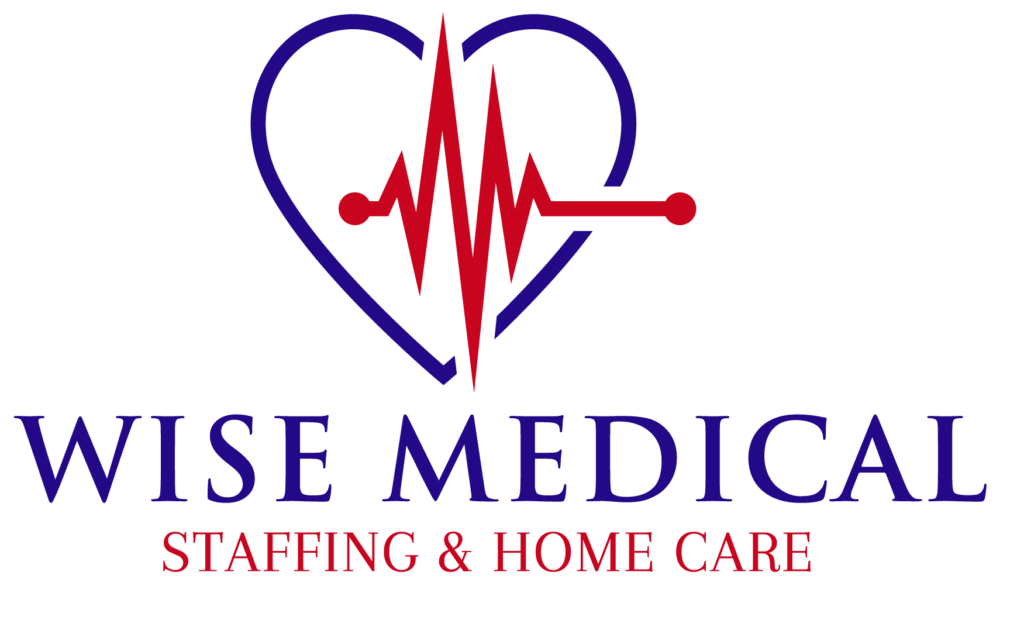
Finding the Right Fit: Challenges in Locating Qualified Candidates Through Agencies
In the ever-evolving landscape of healthcare services, finding the right healthcare professionals remains a persistent challenge for facilities under pressure to deliver top-tier care. Medical staffing agencies bridge the gap between qualified candidates and healthcare institutions. However, these agencies face challenges in identifying, vetting, and placing candidates who meet regulatory compliance and the unique operational needs of each facility. Pressures such as candidate shortages, stringent credentialing requirements, escalating costs, and the need for both quality and cultural fit create a complex market. Since 2001, providers like wisemedicalstaffing.com have invested in streamlined processes and specialized recruitment strategies to overcome these hurdles.
This article explores candidate shortages, compliance and credentialing issues, cost management challenges, and the importance of quality and cultural fit. It also reviews strategies used by agencies and offers guidance for healthcare facilities when choosing the right staffing partner.
What Are the Main Challenges in Locating Qualified Candidates Through Medical Staffing Agencies?
Healthcare staffing faces several challenges. First is the widespread candidate shortage. With increasing demand for professionals such as nurse practitioners, physicians, and allied health professionals, agencies compete in an environment of limited human capital. This shortage is worsened by an aging population and high turnover rates. Healthcare staffing services are essential to address these issues.
Another major challenge is the complex compliance and credentialing environment. As one of the most regulated industries, healthcare requires staffing agencies to navigate federal and state rules, professional standards, and facility-specific requirements. The process of verifying licenses and certifications is time-consuming and resource intensive. Cost and budget constraints further complicate matters as agencies must balance quality candidates with rising staffing expenses. Finally, ensuring a good cultural and professional fit is critical; candidates must not only have the skills but also integrate seamlessly into the facility’s work environment. Agencies must continuously adapt to evolving market conditions, including pandemic-related changes and shifting patient care models.
How Do Candidate Shortages Impact Healthcare Staffing?

Candidate shortages restrict the pool of experienced professionals, resulting in prolonged vacancies and operational inefficiencies. Factors such as an aging workforce, increased retirements, and long training periods exacerbate this shortage. Facilities face higher competition, often needing to offer better benefits or incentives to attract talent. Prolonged search times raise time-to-hire metrics, leading to increased overtime, staff burnout, and higher overall costs. In some cases, facilities may hire less experienced staff quickly, which can compromise service quality and lead to further inefficiencies. To combat these issues, agencies use proactive sourcing strategies, including partnerships with educational institutions and the use of advanced recruitment technologies to both widen the candidate pool and streamline selection.
What Compliance and Credentialing Issues Affect Candidate Placement?
Compliance and credentialing are vital to ensuring that healthcare professionals meet strict regulatory standards. Agencies must verify licenses, certifications, and continuing education records for each candidate across different regions and regulatory bodies. This process involves extensive background checks, reference reviews, and document verification. Even minor errors or delays can jeopardize patient safety and facility operations. To manage these challenges, agencies increasingly rely on electronic verification systems and third-party services, though manual checks often remain necessary. Robust internal compliance practices safeguard data protection and patient confidentiality while maintaining trust with healthcare facilities.
How Do Cost and Budget Constraints Influence Staffing Decisions?
Cost considerations significantly affect staffing decisions. Healthcare facilities continuously weigh the benefits of hiring experienced, permanent staff against the flexibility of temporary or contract staff. Expenses such as recruitment fees, agency markups, and onboarding costs can be substantial, especially when candidate shortages drive up market rates. Agencies help manage these financial pressures by negotiating competitive contracts and offering scalable staffing solutions. Rapid candidate placement minimizes disruptions and reduces overtime and turnover costs. Data analytics further assist facilities in forecasting staffing needs, enabling them to build budgets that account for both immediate and long-term operational impacts.
How Do Medical Staffing Agencies Address These Challenges?
Agencies tackle these challenges using targeted, multi-faceted strategies:
• To address candidate shortages, agencies form partnerships with academic institutions, conduct job fairs, and use digital marketing to build a broad candidate pipeline. • For compliance, they deploy technology-driven solutions that automate background checks and continuously monitor regulatory updates, reducing errors and speeding up verification. • Cost optimization is achieved through economies of scale, flexible contracts, and data analytics that forecast staffing needs accurately. • Finally, ensuring candidate quality and cultural fit involves rigorous screening processes—including interviews, reference checks, skill assessments, and behavioral tests—combined with ongoing post-placement follow-ups.
By integrating these tactics, agencies enhance placement outcomes and improve operational efficiency for healthcare staffing services facilities.
How Do Candidate Shortages Affect the Search for Qualified Healthcare Professionals?
Shortages narrow the talent pool and intensify competition among facilities. The prolonged recruitment process increases time-to-hire and operational challenges such as staff overwork and elevated overtime expenses. Facilities may be forced to accept suboptimal candidates to fill vacancies quickly, which can lead to further training needs and reduced quality of care. Agencies counter these effects by building long-term relationships with academic and professional organizations and maintaining proactive talent pools that allow for rapid deployment when vacancies occur. This strategic sourcing minimizes care disruption and helps control staffing costs by ensuring candidates are well-matched in both skill and experience.
What Causes the Nursing and Allied Health Professional Shortages?
Several factors contribute to the shortage of nursing and allied health professionals. An aging workforce, with many reaching retirement age, coupled with insufficient new graduates, creates a supply gap. High stress, long shifts, and emotional burnout, exacerbated by recent pandemic challenges, further deter individuals from entering or remaining in these fields. Educational limitations such as scarce faculty and clinical training sites, along with restrictive government funding and immigration policies, compound the shortage by limiting the number of new entrants.
How Do Staffing Agencies Source Candidates Amid Shortages?
To overcome shortages, staffing agencies expand their recruitment reach nationally and internationally. They leverage digital tools such as applicant tracking systems, social media, and collaborative job boards that use artificial intelligence to match candidates to open roles quickly. Partnerships with nursing schools, allied health training centers, and professional organizations also help create a steady stream of new talent. Additionally, proactive talent pooling, where pre-screened candidates are maintained in an active database, ensures agencies can rapidly fill openings when they occur.
What Strategies Help Attract and Retain Qualified Candidates?
Attracting and retaining top healthcare talent involves more than competitive salaries. Agencies and facilities focus on career development through mentorship, continuing education, and clear advancement pathways. Work-life balance is also emphasized through flexible scheduling and wellness initiatives, addressing high stress and burnout. In addition to financial incentives like sign-on and retention bonuses, non-monetary rewards, such as recognition programs and professional autonomy, boost job satisfaction. Assessing cultural alignment during the vetting process further ensures that candidates integrate smoothly into the facility’s environment.
How Does Candidate Shortage Impact Time-to-Hire and Facility Operations?
A shortage of candidates prolongs hiring timelines, placing additional burdens on existing staff and potentially delaying critical patient care. Extended vacancies can cause increased overtime, lower staff morale, and diminished operational performance. Facilities may suffer revenue losses and reduced service capacity during these gaps. By using temporary staffing solutions and maintaining robust candidate pools, agencies help mitigate these delays, ensuring swift candidate placement and minimizing negative impacts on patient care.
What Are the Key Compliance and Credentialing Challenges in Medical Staffing?

Compliance and credentialing challenges stem from the need to verify diverse and sometimes cross-border qualifications accurately. Agencies must meet varied regional regulations and ensure that candidates’ licenses, certifications, and education meet strict standards. This process, which involves detailed document reviews and background checks, is both resource intensive and critical for patient safety. Frequent updates to regulatory requirements further complicate the process. To address these issues, agencies use automated systems combined with manual oversight to ensure thorough and timely verification, reinforcing the facility’s trust in the staff they receive.
Which Healthcare Regulations Must Staffing Agencies Navigate?
Agencies navigate a complex landscape of federal, state, and local regulations. These include licensing requirements from bodies like the Joint Commission and various state medical and nursing boards, as well as privacy laws like HIPAA. Additional guidelines from OSHA and CMS affect how healthcare services are delivered and managed. Agencies must ensure continuous monitoring and updating of candidate credentials to meet these diverse standards.
How Do Agencies Ensure Candidate Credential Verification?
Agencies employ a mix of automated systems and manual reviews for credential verification. Technology solutions quickly cross-reference candidate information with licensing databases, while experienced recruiters verify discrepancies and ensure accuracy. This two-step process—combining efficiency with detailed oversight, helps maintain high standards and minimizes the risk of errors or non-compliance.
What Are Best Practices for Maintaining Compliance in Staffing?
Best practices include using integrated software for automated verification, regular internal audits, and continuous training for recruitment staff. Transparent communication with both candidates and healthcare facilities is crucial. Agencies also collaborate with legal and compliance experts to update protocols in accordance with changing regulations, thereby safeguarding both candidate eligibility and patient safety.
How Do Compliance Challenges Affect Candidate Placement Speed?
While strict compliance measures are essential, they can delay candidate placement. Extensive verification processes may extend time-to-hire, potentially leading to staffing gaps. To mitigate this, agencies balance efficiency with compliance by employing technology and expert oversight, ensuring that verification is as rapid as it is thorough.
How Do Costs and Budgeting Influence the Use of Medical Staffing Agencies?
Cost considerations are central to staffing decisions. Facilities weigh the expense of permanent hires against temporary or contract staffing based on current needs and budget constraints. Staffing agencies help reduce indirect costs by filling vacancies quickly, thereby lowering overtime and turnover expenses. They also negotiate competitive terms and provide flexible pricing models, which allow facilities to manage both short-term surges and long-term staffing strategies more effectively.
What Are the Typical Costs Associated With Medical Staffing Services?
Typical costs include fixed placement fees, hourly rates for temporary staff, and additional fees for background checks and credential verification. Rates vary by role, location, and market demand; specialized professionals like nurse practitioners or physicians often command higher fees compared to support staff.
How Can Healthcare Facilities Budget for Temporary vs. Permanent Staffing?
Facilities budget differently depending on the type of staffing. Temporary staffing usually has variable costs influenced by contract duration and markups, whereas permanent staffing is more predictable and focused on long-term savings from reduced turnover. Detailed scenario planning and forecasting, using historical data and predictive analytics, help facilities determine the optimal mix of temporary and permanent hires.
What Is the Return on Investment (ROI) of Using a Medical Staffing Agency?
Using a staffing agency offers ROI through both direct cost savings and indirect benefits like improved workflow efficiency, reduced turnover, and enhanced patient care outcomes. Faster placements limit service disruptions and cut overtime costs, supporting overall financial health and a more stable workforce.
How Do Agencies Help Optimize Staffing Costs?
Agencies optimize costs by leveraging broad recruitment networks, streamlined processes, and data-driven forecasting. Their ability to quickly fill vacancies reduces downtime and enhances operational efficiency. Regular feedback and performance reviews help refine their strategies, ensuring continuous cost savings and high-quality placements.
How Do Medical Staffing Agencies Ensure Quality and the Right Candidate Fit?
Quality and cultural fit are ensured through rigorous screening and vetting. Agencies use structured interviews, skill assessments, and background checks to evaluate technical competencies, while also employing behavioral assessments and reference checks to gauge cultural fit. Continuous post-placement follow-ups and performance evaluations further ensure that candidates perform well over time and align with the facility’s values.
What Screening and Vetting Processes Do Agencies Use?
Agencies conduct multi-step screening that begins with detailed applications, followed by phone or video interviews and comprehensive background checks. Additional tools such as psychometric assessments and skill-specific tests help confirm a candidate’s suitability for demanding healthcare roles.
How Is Cultural Fit Assessed Between Candidates and Facilities?
Cultural fit is assessed through behavioral interview techniques and situational judgment tests. Feedback from previous employers and colleagues also informs the assessment, ensuring that candidates share the facility’s values and can integrate smoothly into the existing team.
What Role Does Specialized Expertise Play in Candidate Placement?
For niche medical roles requiring specific skills, such as advanced surgical procedures or neonatal care, agencies with specialized expertise can more accurately match candidates to the right positions. This targeted approach minimizes training time and contributes directly to improved patient outcomes.
How Do Agencies Guarantee Satisfaction With Placements?
Agencies ensure satisfaction by conducting post-placement follow-ups, collecting performance data, and maintaining open communication channels between candidates and facilities. Regular reviews help address any emerging issues quickly and ensure that the placement continues to meet the facility’s needs.
What Are the Benefits of Partnering With a Medical Staffing Agency Despite These Challenges?
Partnering with a staffing agency grants access to a diverse and extensive candidate pool, speeds up the hiring process, and reduces the stress and costs associated with recruitment. Agencies support compliance and credentialing efforts, manage cost constraints through flexible staffing models, and ensure that candidates are not only highly qualified but also a good cultural match.
How Do Agencies Provide Access to a Wider Pool of Qualified Candidates?
By leveraging extensive recruitment networks, digital job platforms, and academic partnerships, agencies can source candidates from far beyond local markets. This broad reach ensures a diverse and competitive candidate pool.
In What Ways Do Agencies Accelerate the Hiring Process?
Agencies employ advanced tracking systems and maintain pre-vetted candidate databases, reducing downtime between application and placement. This streamlined process ensures that vacancies are filled quickly and efficiently.
How Do Agencies Support Compliance and Credentialing Efforts?
Using specialized software and rigorous internal protocols, agencies ensure that candidate credentials are current, complete, and compliant with all regulatory standards. Expert oversight minimizes errors and builds trust with healthcare facilities.
What Cost-Effective Solutions Do Agencies Offer Healthcare Facilities?
By negotiating competitive rates and offering scalable staffing models, agencies help facilities control costs. Their efficient recruitment practices reduce indirect expenses like overtime and training, contributing to long-term financial savings.
How Can Healthcare Facilities Choose the Right Medical Staffing Agency?

Choosing the right agency is crucial for quality hires and operational efficiency. Facilities should evaluate agencies based on the size and quality of their candidate pool, the rigor of their credentialing processes, their experience in specialized medical roles, and the level of personalized service offered. Reviewing performance metrics, client testimonials, and transparency in fee structures are essential steps in this evaluation.
What Factors Should Be Considered When Evaluating Agencies?
Facilities should consider an agency’s reputation, track record, candidate pool breadth, and expertise. Responsiveness, ability to meet compliance standards, and clear performance metrics are critical indicators of quality.
How Important Is Agency Specialization in Medical Roles?
Specialization matters greatly when filling highly technical or niche roles. Agencies with focused expertise can better match candidate skills with facility needs, reducing onboarding time and improving placement satisfaction.
What Questions Should Facilities Ask Potential Staffing Partners?
Facilities should ask about the agency’s credentialing procedures, turnaround times, cost structures, candidate retention rates, and post-placement support. These questions help ensure alignment with the facility’s operational and quality requirements.
How Can Facilities Verify Agency Compliance and Quality Standards?
Requesting performance metrics, audit reports, and client testimonials is vital. Regular review meetings with the agency further help to verify ongoing compliance and quality of service.
Table: Comparison of Key Candidate Sourcing and Credentialing Strategies
| Strategy | Key Function | Benefit | Example/Metric |
|---|---|---|---|
| Digital Recruitment Tools | Uses ATS and AI to match candidates | Reduces time-to-hire by up to 30% | 25% faster screening |
| Talent Pool Maintenance | Keeps databases of pre-vetted candidates | Provides a ready-to-deploy candidate base | 200+ active candidates |
| Automated Credential Verification | Cross-references regulatory databases | Ensures 100% compliance; reduces errors | 95% accuracy in checks |
| Specialized Certification Checks | Expert review for niche roles | Improves placement quality | Lower turnover rates |
| Academic Partnerships | Collaborates with training institutions | Ensures a pipeline of fresh talent | 15–20 new graduates annually |
Frequently Asked Questions
Q: How do staffing agencies reduce the time-to-hire despite candidate shortages? A: Agencies utilize advanced digital recruitment tools, maintain proactive talent pools, and implement automated verification systems. This integrated approach speeds up the search and screening process, ensuring qualified candidates are deployed quickly.
Q: What are the main factors contributing to candidate shortages in healthcare? A: An aging workforce, increased patient demands, extended training periods, and high burnout rates all contribute to prolonged vacancies and intense competition for candidates.
Q: How is candidate quality ensured during the credentialing process? A: Through a combination of automated background checks, manual reviews, and standardized screening protocols, agencies verify licenses, certifications, and work history, supplemented by specialized interviews and reference checks.
Q: How can healthcare facilities determine if a staffing agency is right for their needs? A: Facilities should review an agency’s reputation, experience in specialized roles, efficiency in candidate sourcing, and compliance measures through performance metrics and client testimonials.
Q: What role do technology and data analytics play in medical staffing? A: They streamline candidate sourcing, reduce time-to-hire, and ensure compliance by automating verification processes and maintaining robust talent pools.
Q: How do agencies manage cost constraints while ensuring high-quality placements? A: Agencies negotiate competitive rates, use flexible staffing models, and leverage extensive networks along with data-driven strategies to balance quality and cost effectively.
Q: What benefits do healthcare facilities experience when partnering with a staffing agency? A: Facilities gain access to a diverse candidate pool, reduced hiring timelines, enhanced regulatory compliance, and overall cost savings, resulting in improved workforce management and patient care.
Final Thoughts
The challenges of locating qualified healthcare professionals through staffing agencies require a strategic, data-driven approach. By addressing candidate shortages, managing complex compliance and credentialing processes, controlling costs, and ensuring both quality and cultural fit, agencies can significantly improve placement outcomes. Healthcare facilities benefit from rapid, cost-effective hiring solutions that support high standards of patient care and operational efficiency. Leveraging innovative talent sourcing strategies and embracing technological advancements will be essential for future workforce management success.
